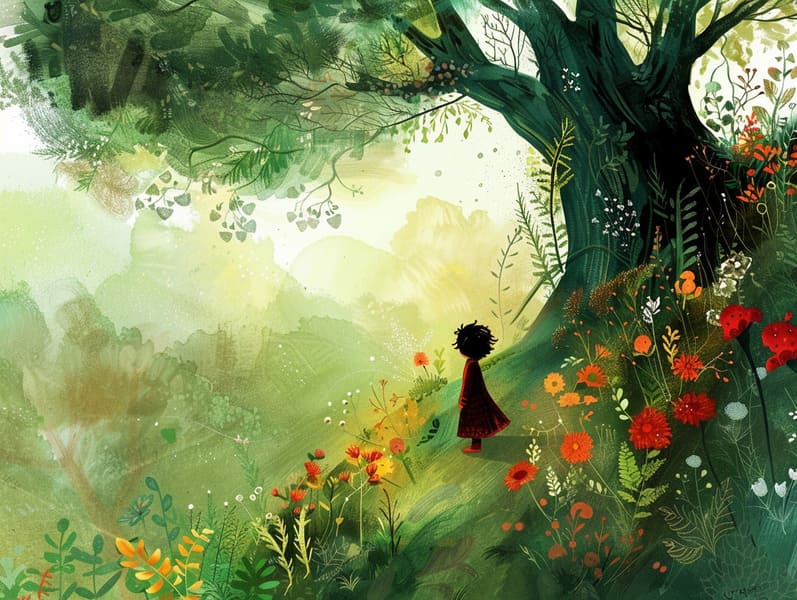A Brief History of Old Fairy Tales and Their Timeless Delight.
A Brief History of Old Fairy Tales and Their Timeless Delight.
Blog Article

Old fairy tales have enduring presence. These narratives have been passed down from one generation to the next long before they were ever put on paper. They were born from a variety of cultures, including European traditions. They were initially disseminated among mature audiences, often carrying themes and messages reflective of the societal norms and beliefs of the time.
The renowned Brothers Grimm, Jacob and Wilhelm (the Grimm brothers), were among the first to compile many of these beloved tales. Their published works, "Grimm's Folk Tales," included tales like "The Story of Cinderella," "The Story of Hansel and Gretel," and "Snow-White and Rose-Red," which have since become staples in the world of traditional fairy tales. Similarly, Andersen's charming fairy tales, such as "The Little Mermaid," and "The Story of the Ugly Duckling," have enchanted hearts worldwide, establishing their place in the pantheon of famous fairy tales.
Despite their ancient origins, traditional fairy tales remain as meaningful as ever, especially as nighttime stories for kids. These delightful tales are now available in diverse formats, including colorful picture books, whimsical animations, and web-based fairy tales.
Their continued relevance can be credited to several charming aspects:
Significant Morals: Ancient fairy tales often share important moral lessons. Narratives like "The Shepherd Boy and the Wolf" teach the value of truthfulness, while "The Tortoise and the Hare" exemplify the values of steadfastness and humility. These narratives offer little ones clear distinctions between virtue and vice, building their moral compass in a gentle yet profound way.
Kindness and Comprehension: Old fairy tales frequently portray protagonists facing challenges and problems, stimulating young listeners to relate with their struggles and celebrate their triumphs. For instance, "Beauty and Her Beast" reveals the importance of seeing beyond the surface to see the real character of a being, fostering perception and understanding.
Cultural Knowledge: Many fairy tales are deeply embedded in the cultural contexts from which they sprang. Immersing in these fairy tales can provide intriguing perspectives into different beliefs, strengthening a sense of world awareness and appreciation.
Creativity and Imagination: The imaginative elements in traditional fairy tales—wizardry and magic—engender children’s innovations. These stories transport readers to supernatural realms, engendering fantastical thinking and a sense of amazement that remains a lifetime.
Classic fairy tales are not only fantastical but also enlightening. They function as magical tools in fostering various intellectual and emotional capacities in young readers. When ancient fairy tales are spoken, they improve language development by presenting new terms and meanings and sophisticated sentence structures. This practice also boosts auditory perception and concentration, as kids listen intently, anticipating to see what happens next.
Furthermore, contemplating the themes and characters of old fairy tales can foster problem-solving abilities and reasoning skills. Little these guys ones learn to pinpoint patterns, predict happenings, and figure out cause and effect. These explorations also ease kids express their thoughts and feelings, enhancing their emotional intelligence.
In today’s technological age, the accessibility of digital fairy tales has made these tales more available than ever. Online resources and software share wide arrays of children's fairy tales that can be enjoyed or listened on anytime, anywhere. Fairy tales spoken are particularly sought after, providing an charming way for the young to engage with these whimsical stories. Narrated books and read-out-loud videos take characters and settings to life, often supplemented by delightful melodies and melodies that heighten the storytelling experience.
The persistent attraction of ancient fairy tales lies in their ability to change to today's society while keeping their core messages. Contemporary modernizations of these fairy tales often include more varied characters and modern settings, making them relevant to today’s audience. However, the underlying themes of valor, benevolence, and fairness remain unchanged, continuing to impact listeners of all ages.
Traditional fairy tales also offer a sense of solace and predictability. They make accessible a organized narrative with a distinct beginning, middle, and end, often drawing to a close with the ending of conflicts and the triumph of good over evil. This certainty can be encouraging for the young, providing a sense of steadfastness in an ever-changing world.
Old fairy tales continue to captivate and instruct new generations, maintaining their mystique and pertinence in modern society. As children's bedtime stories, they share a perfect blend of charm and enlightenment, sustaining moral values, empathy, and creativity. The proliferation of web-based fairy tales and the prevalence of fairy tales spoken affirm that these traditional tales remain attainable to new generations.
By defending and distributing these stories, we continue to pay tribute to the rich tapestry of mythology and cultural heritage. Whether you are viewing a gorgeously illustrated book, delving into a electronic library, or playing an voice book, the attraction of popular fairy tales is always within reach. These tales remind us of the eternal essence of storytelling and its ability to bring us together across time and space.
No matter if you are reading a gorgeously illustrated book, experiencing a online collection, or listening through an read-aloud book, the charm of famous fairy tales is always within reach.
These tales teach us of the continued magic of fairy tales and its ability to hold us together across epochs and places, weaving a spell that captivates and teaches alike.